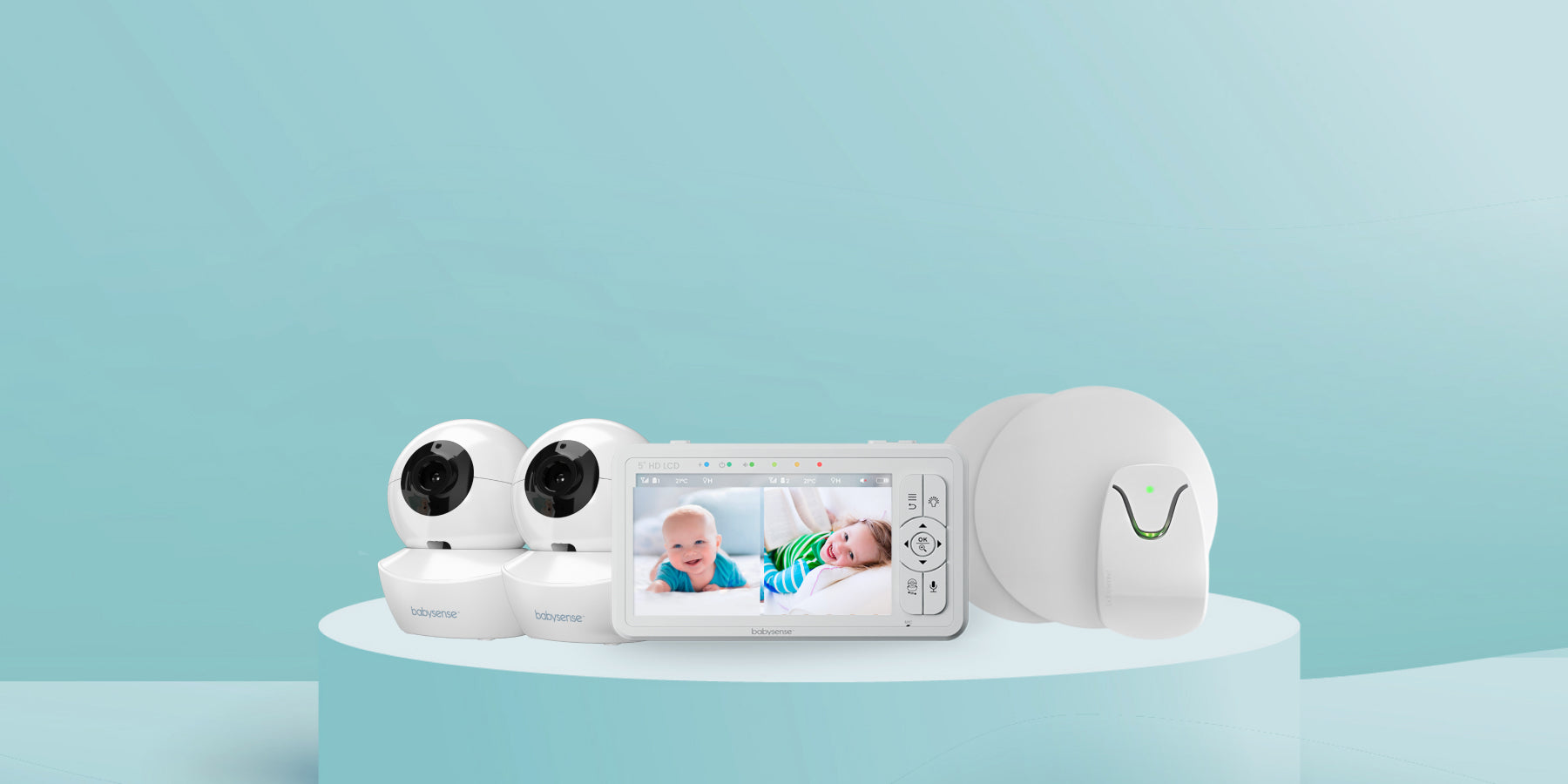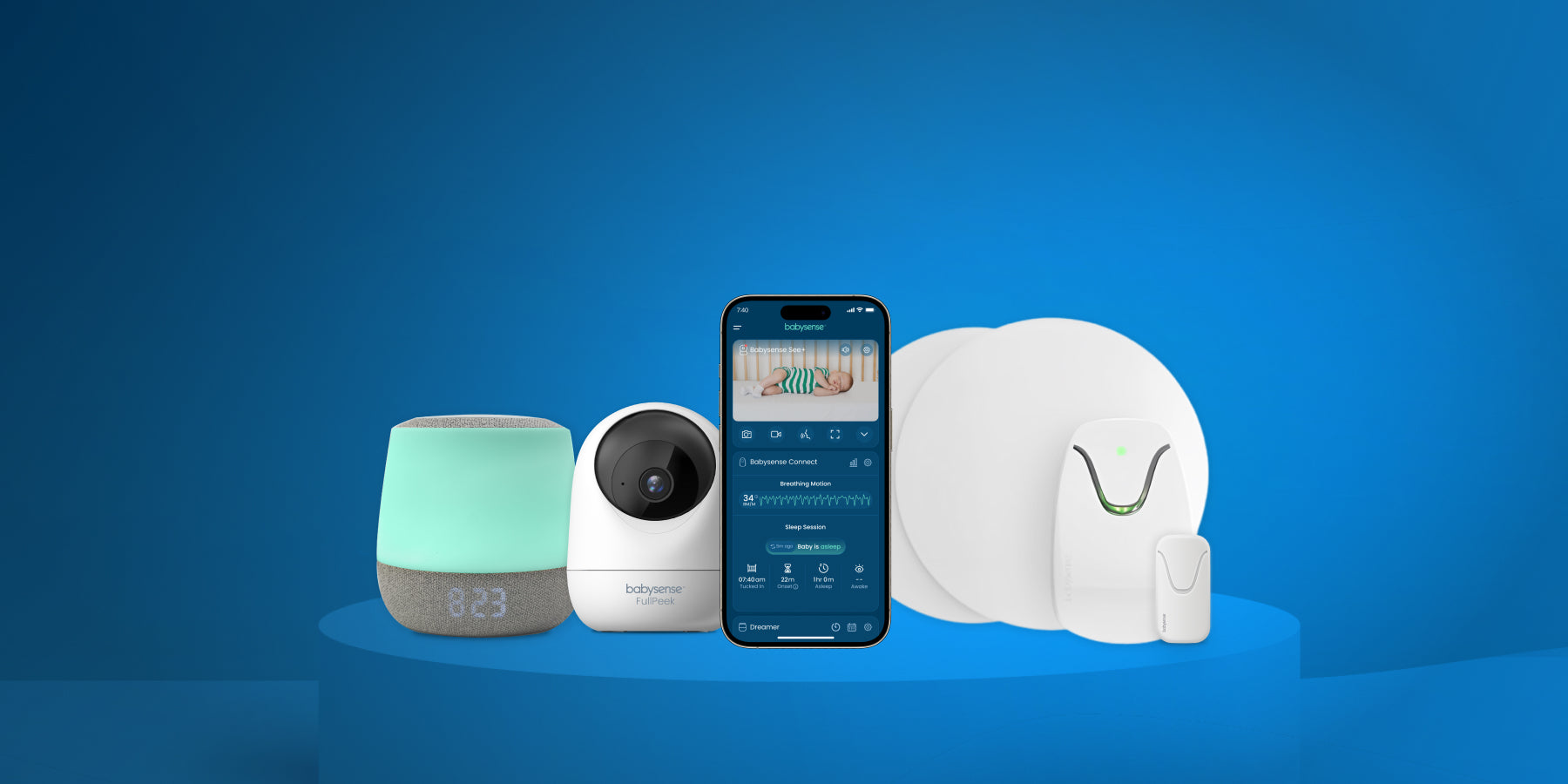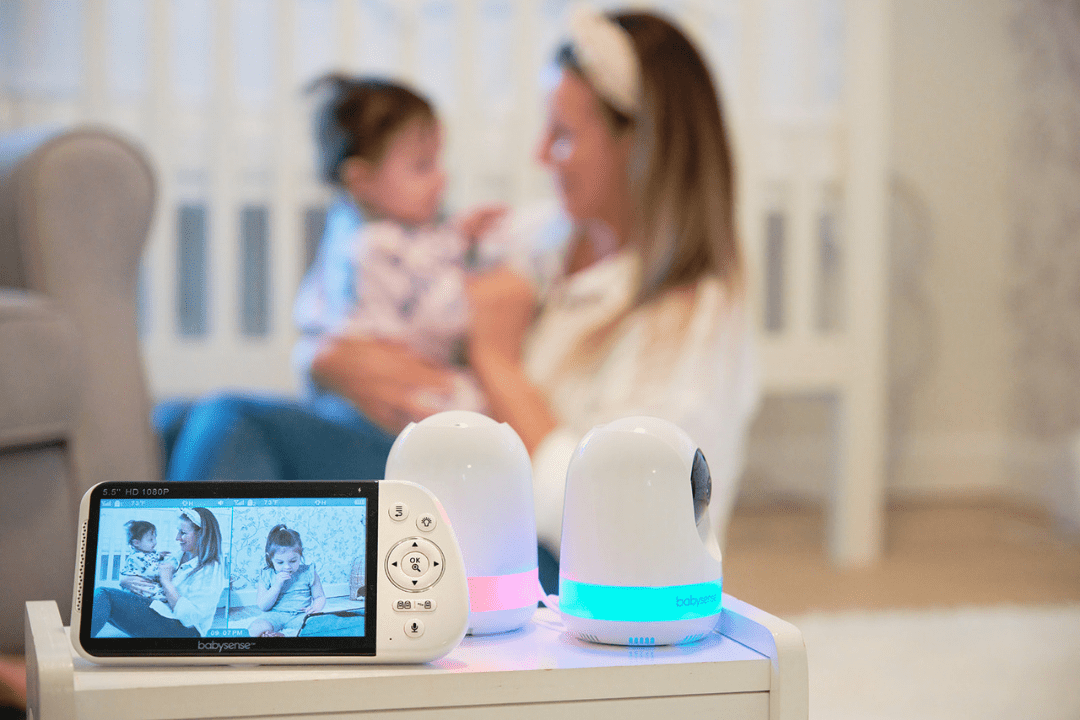When shopping for video baby monitors, you'll notice how many different products there are to choose between. From traditional baby monitors to high-tech WiFi models, it's easy to get overwhelmed by the amount of choice.
As a soon-to-be parent, you've got enough to worry about without browsing extensively for a baby monitor! To make your shopping experience easier, we've compiled a complete guide to WiFi vs. non-WiFi video baby monitors.
Read on for an in-depth review of both products, including pros and cons and some handy FAQs.
How Do WiFi Baby Monitors Work?
As the name suggests, WiFi baby cameras and monitors use a wireless internet connection to transmit signals between your baby's room and you. This means you'll be able to keep a watchful eye on your baby anywhere, provided you have a good internet connection.
Most WiFi baby monitors offer connectivity to a smartphone app, meaning you can monitor your baby using your phone. Some even offer multi-screening - a handy feature if you've got another family member looking after your little one!
Because WiFi baby monitors depend on WiFi technology to function, they cannot operate if there is a power cut or you are experiencing connectivity problems.
How Does A WiFi Monitor Differ From A Non-WiFi One?
Unlike WiFi baby monitors, non-WiFi baby monitors don't need to be connected to the internet to transmit video and audio. Similar to a radio signal, they use FHSS or DECT to connect you to your baby in real-time. Because they use these non-static channels, they are more secure than WiFi baby monitors.
While WiFi monitors use your smartphone as the parent unit, a non-WiFi monitor comes with a dedicated parent unit, which is necessary for you to monitor your baby. It features a screen and a speaker.
When you think about non-WiFi baby monitors, you may be picturing traditional radio-style receivers. But with all the recent advances in technology, they are now so much more than that!
The majority of modern non-WiFi models transmit real-time video imaging. Some even allow you to remotely adjust the camera in your baby's room, to ensure that you never miss a thing.
WiFi Vs. Non-WiFi Baby Monitors: Head-to-Head
From signal range to price, there are a lot of differences between WiFi and non-WiFi baby monitors.
To inform your purchase, we've compared the key features of each product.
Monitoring performance
Because non-WiFi baby monitors use a localized connection, you won't be able to monitor your baby over long distances. Some monitors offer a distance of 300 feet, while others can transmit across 1000 feet (or more). Consider the monitoring distance you require before choosing a product.
On the other hand, WiFi baby monitors aren't limited by distance. If you'd like the ability to keep an eye on your baby from afar (for example, if you go out and leave your child with a babysitter), opt for WiFi monitoring.
Security
Because non-WiFi baby monitors transmit data via non-static channels, they are effectively non-hackable. If you want to guarantee security and privacy, we'd recommend opting for a non-WiFi model.
On the other hand, WiFi baby monitors are less secure because WiFi can be hacked relatively easily. If you're opting for a WiFi baby monitor, you can go for one that uses AES 256 bit encryption - the most advanced encryption to maximize your WiFi baby monitor safety.
While non-WiFi devices are undoubtedly more secure, encrypted WiFi baby monitors are relatively secure too.
Video quality
While you may assume that high-tech WiFi baby monitors offer a much better video quality, there are high-quality non-WiFi products on the market too. While all non-WiFi baby monitors provide a clear image during the daytime, most also have a night vision mode.
Both types of monitors offer a decent video quality, which allows you to see what your little one's up to at any time.
Non-WiFi baby monitors come with a 2.4-5 inch viewing screen, while WiFi baby monitors are connectable to a smartphone app. Your phone screen is likely a higher resolution than the dedicated screen - this is something to bear in mind.
Delay
Due to the lengthy data transfer process, WiFi baby monitors often have a transmission delay.
Because non-WiFi baby monitors use peer-to-peer communication, they don't suffer from the time delay that WiFi models do. If viewing your baby in real-time is a priority, opt for a non-WiFi baby monitor.
WiFi Baby Monitor Advantages
Tech-savvy new parents will naturally gravitate towards the most high-tech type of monitor: WiFi baby monitors.
Here are some of the main advantages of WiFi-connected monitoring devices.
View footage from anywhere
Perhaps the main draw of WiFi baby monitors is that they allow you to keep a watchful eye on your baby from any distance. You can check on your baby if you're out of the house or even out of town.
This provides some much-needed reassurance to parents that have to leave their kids with a nanny or family member regularly. If you're missing your little one, you can simply load up the app on your smartphone and watch them sleep peacefully!
Stronger signals
While non-WiFi baby monitors cannot transmit over 1500 feet, WiFi devices that use DSSS can receive and send signals anywhere.
Provided you've got a WiFi connection, the transmission range will never be an issue with a WiFi model.
No need to carry around an extra receiver
While non-WiFi baby monitors require the use of a separate parent unit, WiFi monitors use your smartphone instead.
Using your existing smartphone is far more convenient than carrying around an additional receiver. Plus, who needs an extra device to worry about losing?!
Some models have multi streaming
While not all WiFi baby monitors offer this, some models allow you to stream on multiple devices. This is perfect for two-parent families or regular babysitters who will also need to monitor your baby.
Non-WiFi Baby Monitor Advantages
While they're less high-tech, non-WiFi baby monitors also have their advantages. Here are some of their major selling points.
Relatively hack-proof
Non-WiFi baby monitors transmit data via non-static channels, making them far more secure than WiFi-connected alternatives.
While nothing is conclusively 'un-hackable,' non-WiFi baby monitors come pretty close. Most use frequency hopping spectrum (FHSS), which is incredibly difficult to hack.
Opt for a non-WiFi monitor if security is your top concern.
Less likely to experience delays
Non-WiFi baby monitors are far less likely to have a noticeable time delay because the data transmission process is far quicker.
While WiFi models transmit the feed to the cloud before sending it to routers and your mobile devices, non-WiFi monitors send the feed straight from one unit to the other. If you want to avoid the potential 10-second delay that comes with WiFi baby monitors, opt instead for a non-WiFi monitor.
Very easy to use
While WiFi baby monitors require you to connect to your smartphone and the internet, non-WiFi devices are much more straightforward.
Non-WiFi baby monitors require far less setup- just plug in the units where necessary and ensure they're linked up.
More affordable
Because they're a more straightforward piece of tech, non-WiFi devices are generally cheaper than their WiFi counterparts. They're a good choice if you're on a tighter budget.
We know how expensive baby shopping can be. Opting for a non-WiFi baby monitor is one small way to cut costs as you prepare for your little one's arrival.
Conclusion: Which Baby Monitor Should You Choose?
Like so many aspects of parenting, there's no straightforward answer to this question. It depends on what you want to get from your baby monitor, whether that's guaranteed privacy, a high-res video image, or an unlimited monitoring distance.
Here are some recommendations based on your top priority factor:
If cybersecurity is your priority
In the digital age, parents can't be too careful about e-safety and privacy.
Because WiFi baby monitors use your local WiFi network, they are relatively easy for hackers to access. Though monitors with advanced encryption are more secure, we'd recommend a non-WiFi baby monitor if your priority is security.
The FHSS (frequency hopping spectrum) offered by peer-to-peer mode is one of the safest connection methods.
If convenience is your priority
If you're looking for a convenient and user-friendly baby monitor to slot into your busy life, we'd recommend an encrypted WiFi baby monitor.
Rather than carrying around a separate parent unit, you can monitor your little one from your smartphone. Other family members can too, with video monitors that offer multi-viewing.
Provided you’re confidant using a slightly more high-tech option, a WiFi baby monitor is the most user-friendly. The video quality will likely be higher, too. Some WiFi baby monitors even offer 1080p HD and 2k resolution!
If simplicity is your priority
If you're looking for a simple, no-frills baby monitor that will get the job done, we'd point you towards a non-WiFi baby monitor.
You can watch your baby sleep whenever you want, regardless of whether you've got a WiFi signal or not. Though the video resolution may not be as high, you won't have to navigate a new app or link up to your router.
You'll also enjoy real-time viewing because peer-to-peer feed transfer is almost instantaneous. Though there could be a slight delay, it shouldn't be more than a second or two.
A non-WiFi model is the best baby monitor for those uninterested in the high-tech features of WiFi alternatives. Sometimes, simpler is better.
FAQs
Are WiFi baby monitors safe?
Although a standard WiFi baby monitor can be hacked into quite easily, encrypted models on the market offer you more peace of mind. These monitors don't pose as much of a security risk and can certainly be considered safe.
If you're looking for the safest baby monitor, opt instead for a non-WiFi model that uses peer-to-peer communication.
What is the range for a non-WiFi baby monitor?
While a WiFi baby monitor has an unlimited range (provided you're connected to the internet), non-WiFi alternatives can have a set transmission range.
The maximum transmission range for most non-WiFi monitors is approximately 1000 feet, though some advanced models can transmit up to 1,5000 feet. Past this range, your baby monitor will be unable to get a signal, and you'll be unable to reliably keep an eye on your baby.
Does a WiFi monitor need a constant internet connection?
As the name suggests, a WiFi baby monitor needs an internet connection to function.
If your WiFi is unreliable, the transmission may cut out and prevent you from receiving a real-time view of your baby. If your internet turns off altogether, your baby monitor will not work.
If you live in an area with poor internet access, we'd recommend avoiding a WiFi baby monitor altogether for the reasons outlined above.





